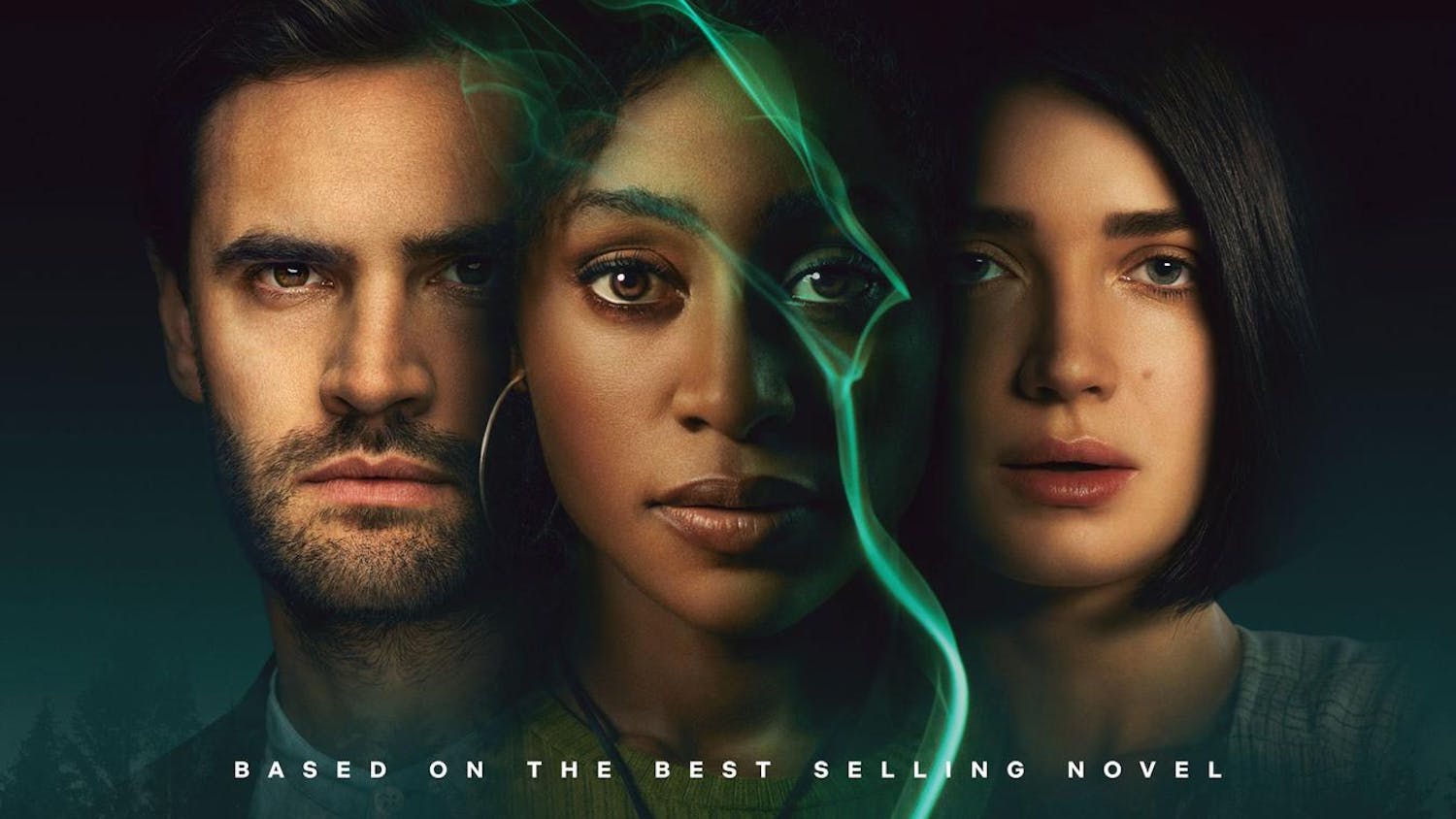Still slightly tipsy from my final legally purchased — and Irish-manufactured — pints of Guinness, I boarded the flight back from study abroad with a collective download of 15 hours’ worth of movies, a few hundred minutes of podcasts and one album: Ethel Cain’s Preacher’s Daughter. A final vestige of my embarrassing sad girl winter music phase (December, after all, doesn’t count for Spotify Wrapped), the vibe was also fitting for the desire to re-romanticize America as I prepared to set foot on home soil for the first time in five months.
Reader, I listened to Preacher’s Daughter four times in the time it took to fly from Dublin to Los Angeles. During the hour I spent waiting for the luggage to finally file out of the baggage claim, I made it all the way back down to “Sun Bleached Flies” for a fifth time. I’ve since listened to each song dozens more times, described the album concept to my disinterested nine-year-old brother and lauded Cain on an ill-fated FaceTime with my ex; maybe it was a case of right place right time, but the album had a substantial impact on me.
Yet, there remained something slightly unsatisfying: It wasn’t enough. I needed to replicate the feeling elsewhere; frankly, I needed to replicate the feeling in film. I was sure I would be able to scratch this same itch through cinema. There had to exist a microgenre that felt the same to watch — call it American Gothic.
I began my search. First, it's good to be clear what one is searching for. How precisely does Preacher’s Daughter work? The most obvious answer is in the juxtaposition of the romantic and the macabre. At the center of the album, Cain chooses to place in succession the epic love ballad “Thoroughfare” and the horrific abuse chronicle “Gibson Girl,” suggesting an inevitable progression from the heartfelt yearning for connection into the deeply unpleasant reality of human cruelty. She closes the album with “Strangers,” a song where the proximity between “devoured” and “love” can’t be more than a couple of lines. There, Cain refuses to cede any of the language of the starry-eyed while doubling down on the literalized cannibalizing process of learning and loving another human being.
The album is also tinged with a two-pronged nostalgia: for the personal experiences lost to time and for an imagined image of a felt, fantastical Americana. The latter draws on the image of the national expanse in its perpetual loneliness and on a specific Southern Christian conception of God and sin. Not quite as garish or institutional as its Roman Catholic counterpart, the stripped down protestant folksiness of some or other Southern Christian sect still centers on a masculine authority figure — Cain’s preacher father — and remains focused on the instillation of guilt over one’s sinful hedonism. A Southern setting adds for many the implication both of unknown and known evil: marshes and forests distrusted in their foggy mysteriousness and civilization reviled for its connection to the country’s original sin. Thus, the lyricism coheres as a nostalgic yearning for a past both semi-fantastical and consciously unpleasant. These two contradictions (those between the romantic and macabre and that of simultaneous nostalgia and repulsion) make up the American Gothic.
Immediately, I hit a wall trying to translate these qualities into cinema. The first place to go was the serial killer period piece: Zodiac, or perhaps the poetic sinfulness of Se7en. It’s still not quite right. David Fincher’s vibe, even when he’s using the imagery of religion, always ends up either in simple bitterness or salesman-like thrills.
On the other end, M. Night Shyamalan manages to capture an incredibly earnest (and often nostalgic) portrait of Americana, particularly in Signs. Centering rurality and religion — albeit with a splash of science fiction to replace the murder plot — Shyamalan observes a deep yearning for place centered in both horror and tragedy. But as a filmmaker, he’s too Spielbergian (obsessed with the grand cinematic gestures and moments of uncritical emotional catharsis) to end up ultimately romantic about bleak reality. The beauty ends up supplanting the reality, not living amidst it. Again, cinema’s American Gothic fails.
I thought of going into the surreal. David Lynch, and his stateside spiritual predecessor, Maya Deren, both relish existence on the lines of complex emotions. Deren’s mostly silent cinema provided a charm as an ironic possibility — I wonder about the experience of setting Meshes of the Afternoonto “Western Nights” — and there is in her work that specific ethereal quality so brilliantly captured by Cain. Lynch, however, is the one to look at: His bleakly upbeat Wild at Heartlargely captures the album’s early youtful wistfulness and the tragic romanticism of the rest is perfectly embodied in Twin Peaks: Fire Walk With Me. In Lynch’s vision for the latter, there’s a deep sadness, a clear love for Americana and a depiction of horror that is both supernatural and human. The only problem is that Lynch is just like Cain in a different way: He scratches a very specific itch; you can’t quite convince yourself that it feels exactly like anything else.
As a last ditch, I watched The Night of the Hunter, a thrilling and horrifying portrait of the Depression-era American South directed (oddly enough) by the Englishman Charles Laughton. For all of the eeriness he captures in the moonlit marshland, Laughton knows where to find the beauty — the expressionistic black-and-white photography perfectly straddles the Cain line. Its pre-code tacked-on Hollywood happy ending and child-centric platonic-ness deprives it of an ultimate translation, but there’s an image or two that sure feel a lot like what I was looking for.
There might never be a precise analogue to Preacher’s Daughter in cinema, even if the exercise of pursuing one was exciting. I found that as I expanded search boundaries the possibilities for connective tissue begin to reconfigure; if beyond Americana, why not Bergman’s Fanny and Alexander on the front half of the album and Kurosawa’s Cureto emulate the back half; if sans horror, one can find cool comfort in Over the Garden Wall and its expansive nostalgic emptiness; if exiting cinema, literature offers a bevy of similar feelings (perhaps Faulker’s “A Rose for Emily”).
But it’s both depressing and exciting: to have a piece of art capture something so specific and so felt and so new… and then to find oneself unable to recapture it anywhere else. I’ll be listening to Preacher’s Daughter for the next few months, until the next obsession surfaces and then occasionally for at least a few more years. I’ll keep looking for it elsewhere, finding glimpses and glimmers in moments of old favorites and new discoveries. The feeling of novelty will eventually dull itself, and it’ll simply become a classic for me (or an embarrassing phase I’m glad to be over with). Maybe one day I’ll find — or someone will make — the quintessential piece of cinematic American Gothic. For now, I’ll be content with the specialness of the confined feeling.
Max Fattal is a junior in the School of Industrial Labor Relations. They can be reached at mfattal@cornellsun.com.
Max Fattal is a graduate from the School of Industrial and Labor Relations. They served as the associate editor of The Cornell Daily Sun on the 142nd Masthead. They can be reached at mfattal@cornellsun.com.











